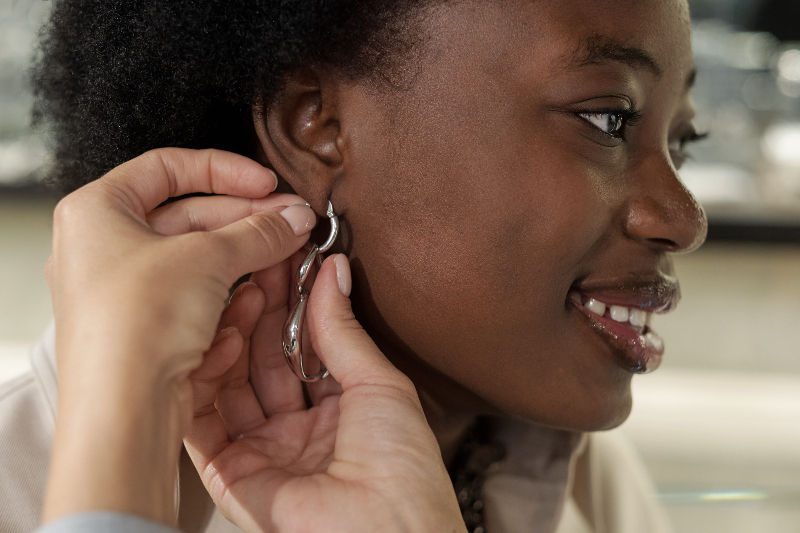Earring Allergy: Causes, Symptoms, and Treatment
- AllergyRhino

- Mar 11
- 2 min read
Updated: Apr 1
Earrings are a popular accessory, but for some people, wearing them can lead to itching, redness, swelling, or even pain. If you experience discomfort after wearing earrings, you may have an earring allergy. Understanding the causes, symptoms, and treatment options can help you find the best way to enjoy jewelry without irritation.

What Causes an Earring Allergy?
An earring allergy is typically caused by a metal sensitivity, most commonly to nickel. Nickel is a widely used metal in jewelry, including earrings, and can trigger an allergic reaction known as contact dermatitis. Other metals, such as cobalt or chromium, can also cause reactions, but nickel is the most common culprit.
Symptoms of an Earring Allergy
Symptoms of an earring allergy usually appear within a few hours to a few days after wearing earrings. These may include:
Redness or swelling around the earlobe
Itching or burning sensation
Dry, flaky, or scaly skin
Blisters or crusting
Pain or tenderness
In severe cases, an untreated allergy may lead to infection if the skin becomes irritated and bacteria enter the affected area.
How to Know If You Have a Nickel Allergy
A nickel allergy can be diagnosed through a patch test, where a dermatologist applies a small amount of nickel to the skin to observe a reaction. If you experience irritation, it's likely that you have a nickel allergy.
How to Prevent Earring Allergy Reactions
If you have an earring allergy, you can take the following steps to avoid discomfort:
1. Choose Hypoallergenic Earrings
Look for earrings made of nickel-free or hypoallergenic materials, such as:
Stainless steel
Titanium
Surgical-grade stainless steel
Platinum or pure gold (14k or higher)
2. Apply a Protective Coating
If you have a favorite pair of earrings that contain nickel, you can use a clear nail polish or a jewelry sealant to create a barrier between the metal and your skin.
3. Limit Earring Wear Time
If you’re sensitive to certain metals, try wearing earrings for shorter periods to reduce exposure and irritation.
4. Keep Your Earrings and Ears Clean
Clean your earrings with rubbing alcohol before wearing them and wash your ears with mild soap and water after removing earrings.
Treatment for an Earring Allergy
If you develop an allergic reaction, you can try these remedies:
Remove the earrings immediately to stop further irritation.
Apply a corticosteroid cream to reduce itching and inflammation.
Use antihistamines to relieve symptoms.
Apply a cold compress to soothe swelling.
If symptoms persist or worsen, consult a doctor to prevent infection and manage severe reactions.
Testing your allergies with AllergyRhino
An earring allergy is often caused by a sensitivity to nickel, but switching to hypoallergenic metals and using protective coatings can help prevent reactions. If you suspect you have an allergy to metals, patch testing can provide clarity.
At Allergy Rhino, we offer an advanced blood test that screens for 295 allergens, helping you identify and manage your allergies with confidence.
Want to find out what’s causing your skin reactions? Learn more about our cutting-edge allergy testing solutions today!



Comments